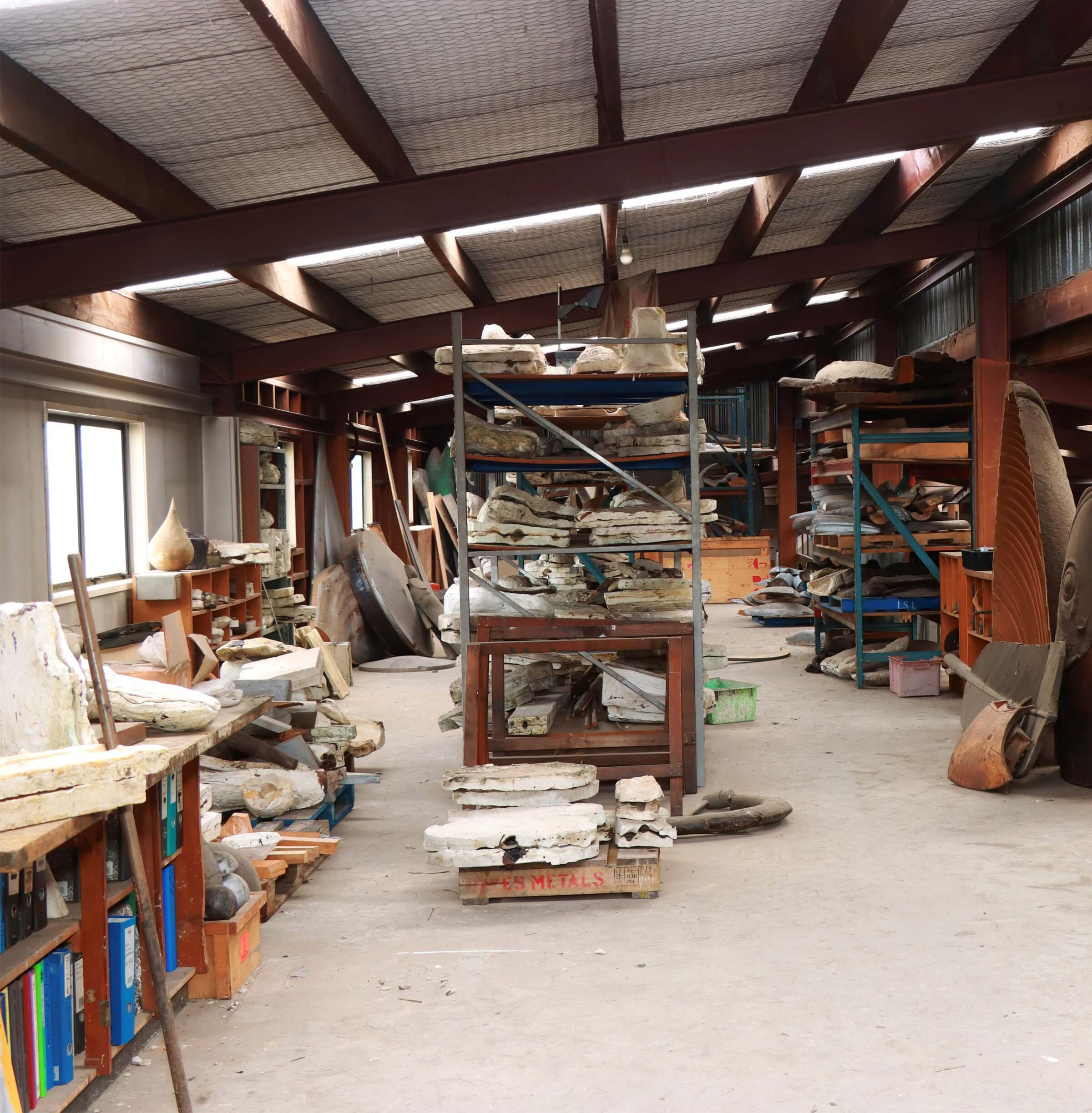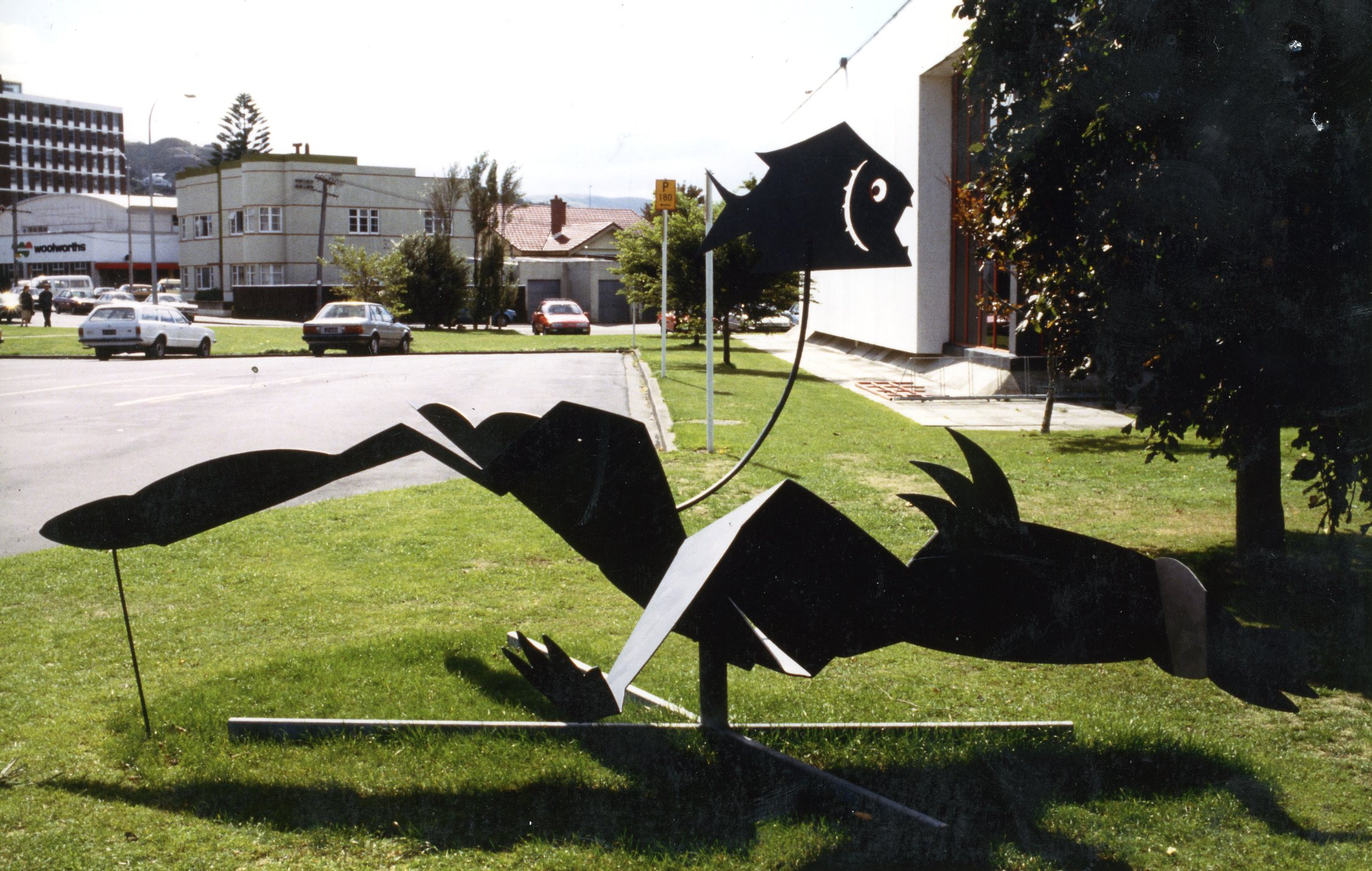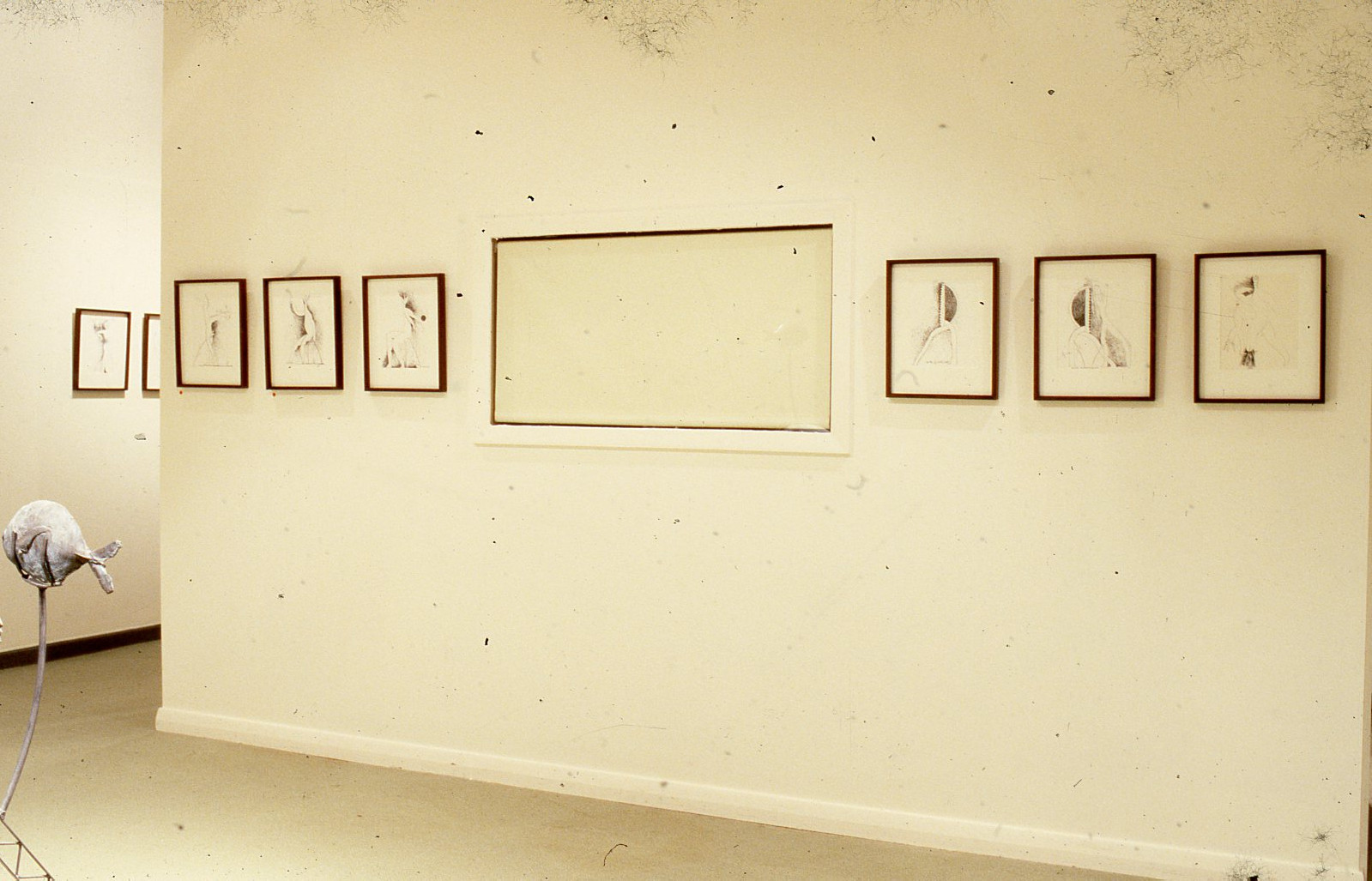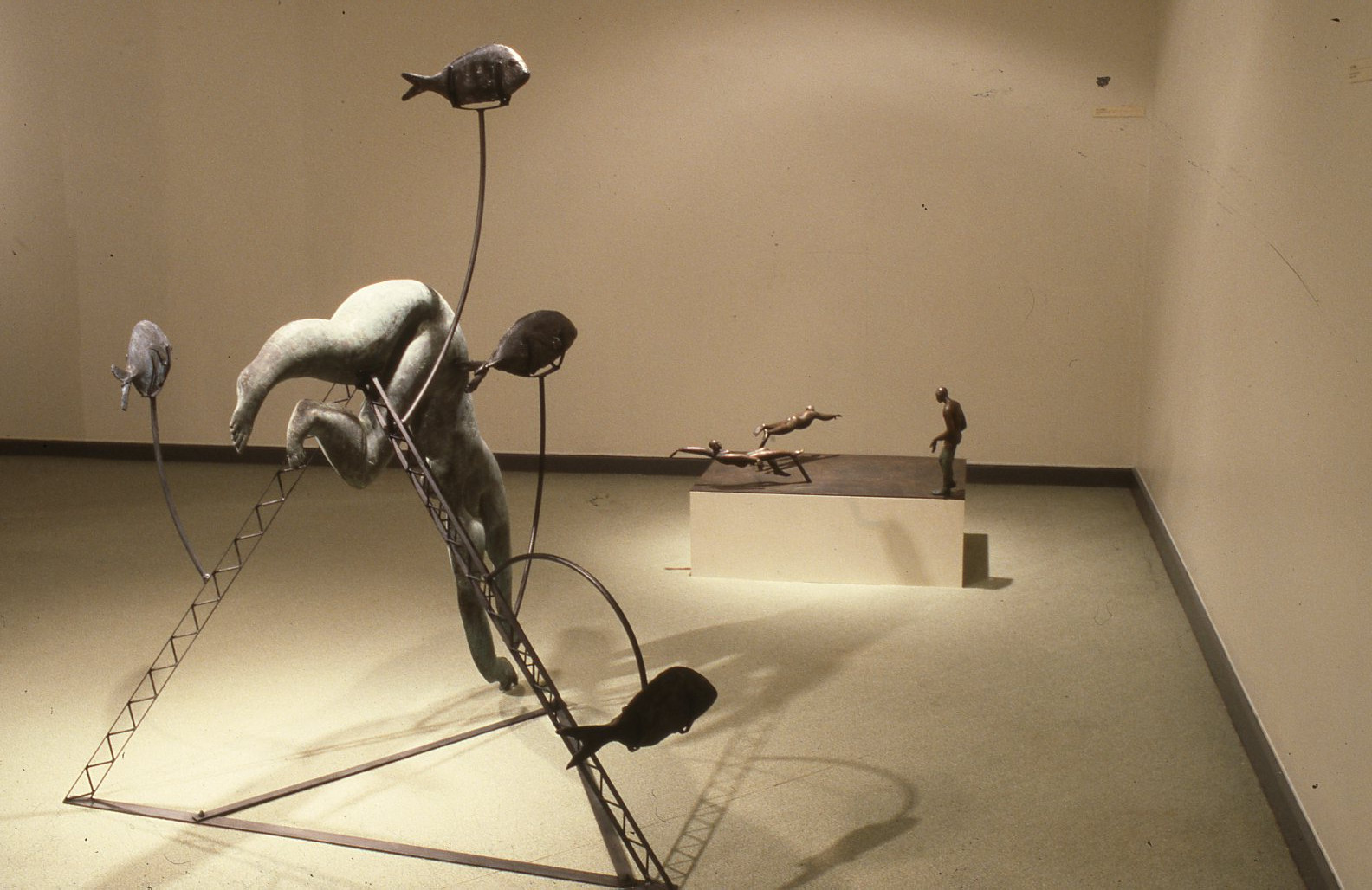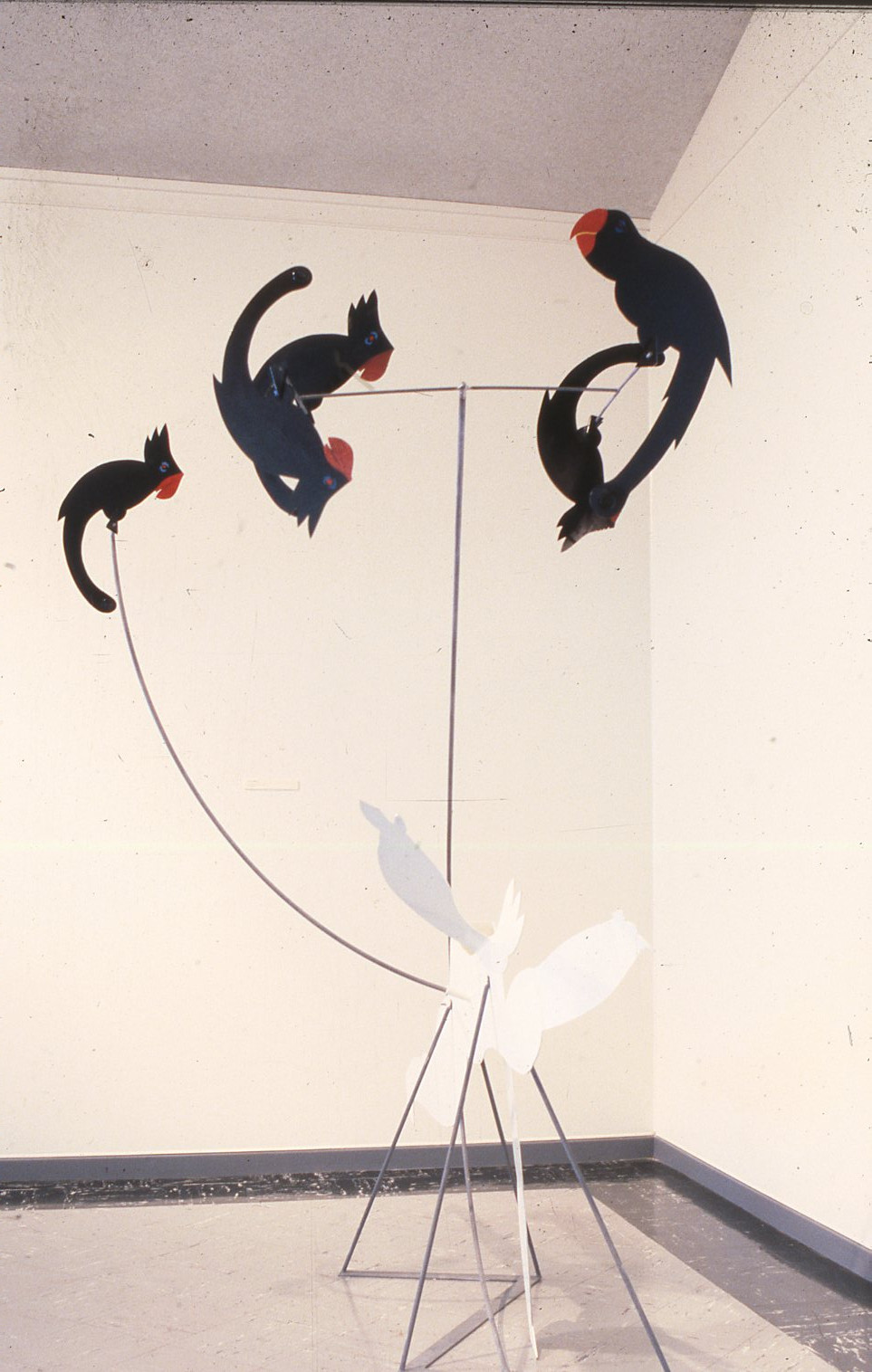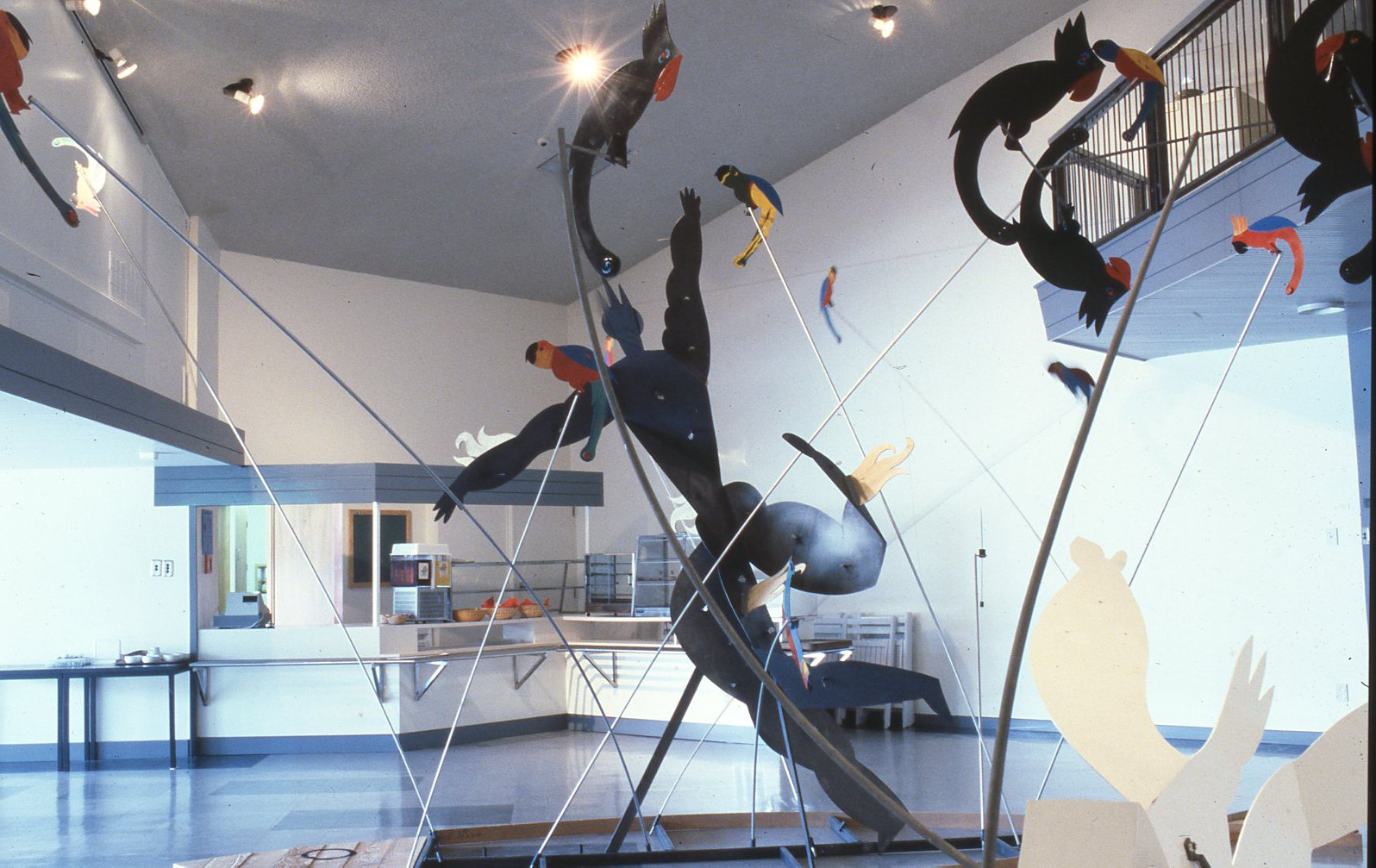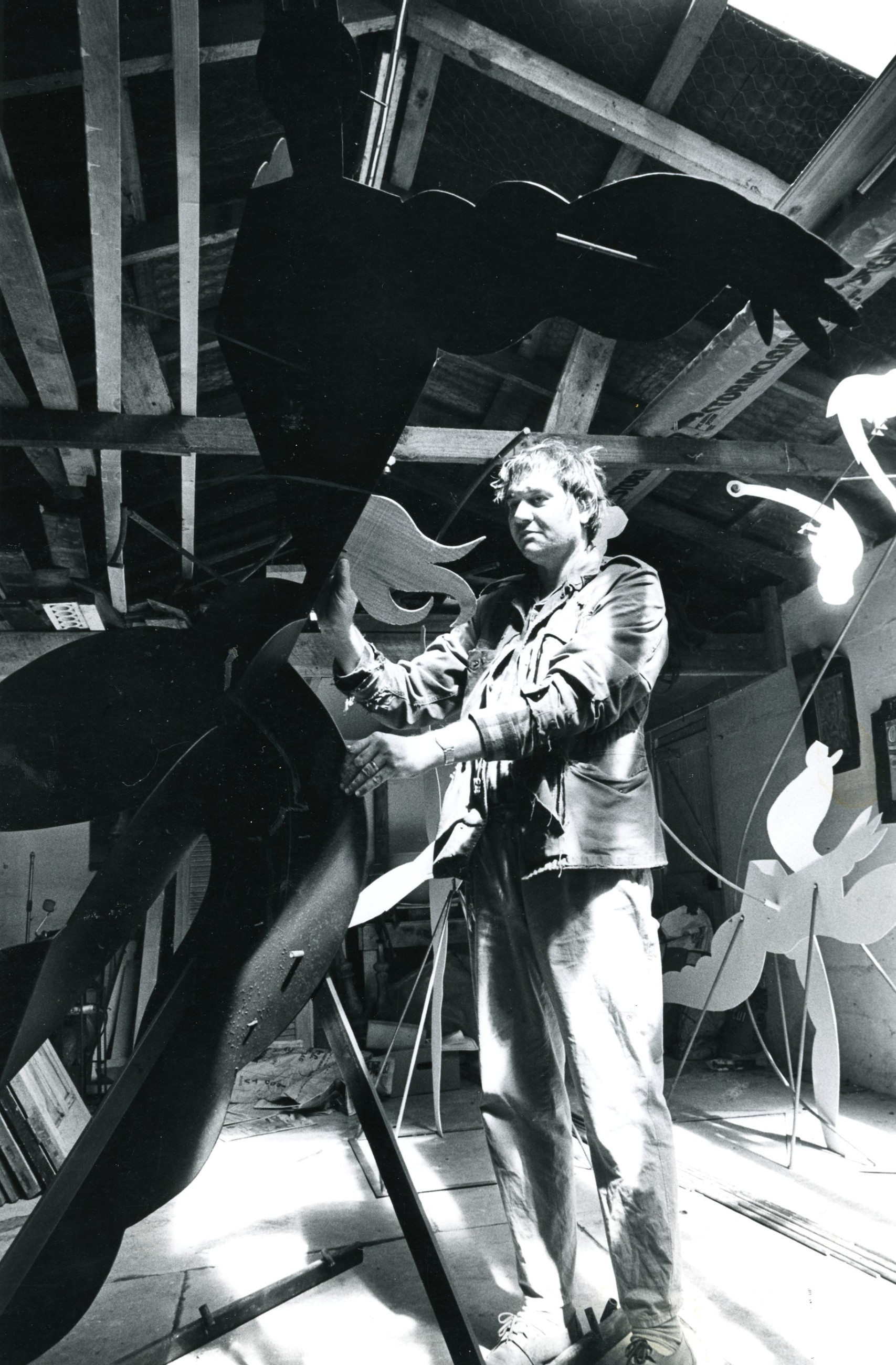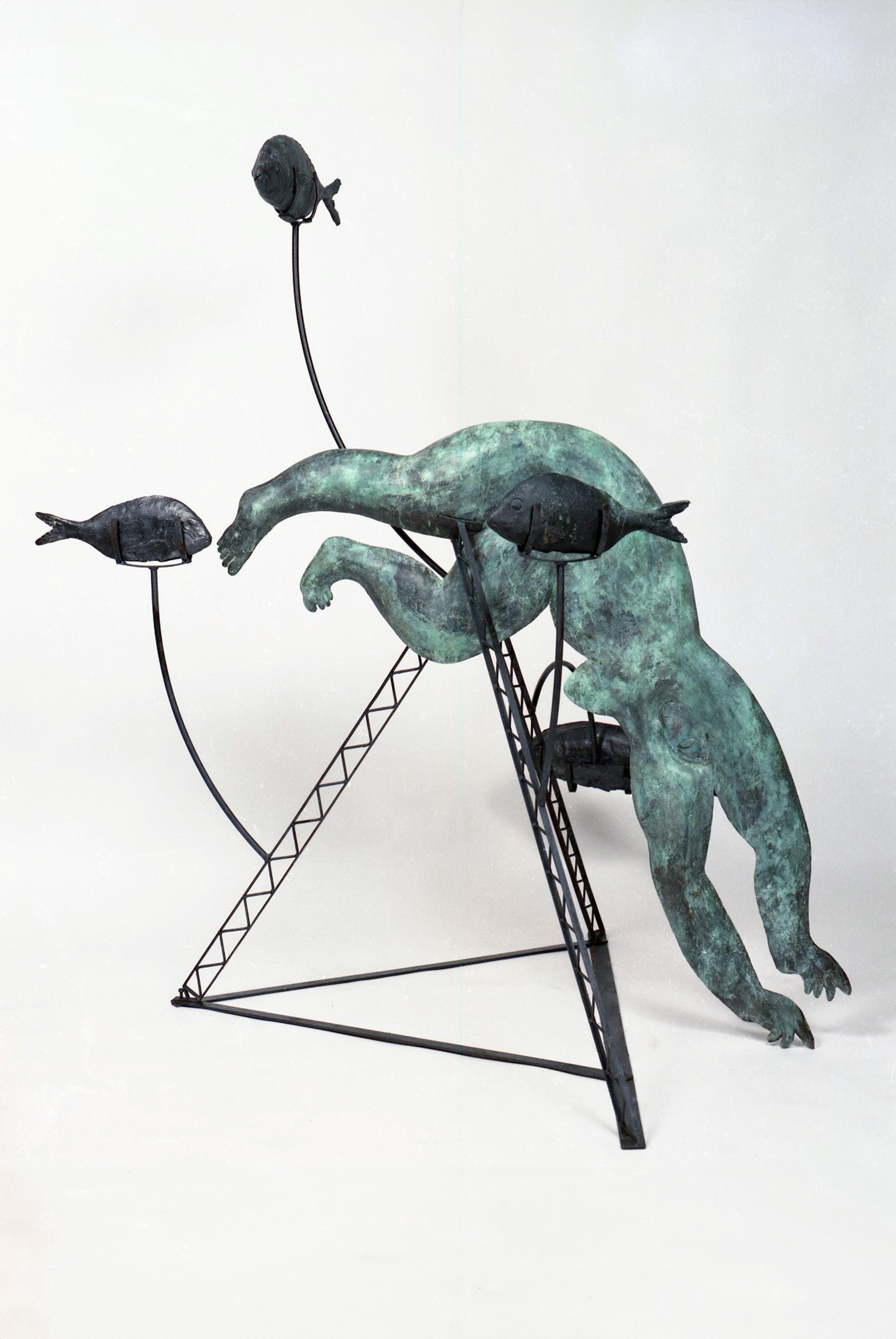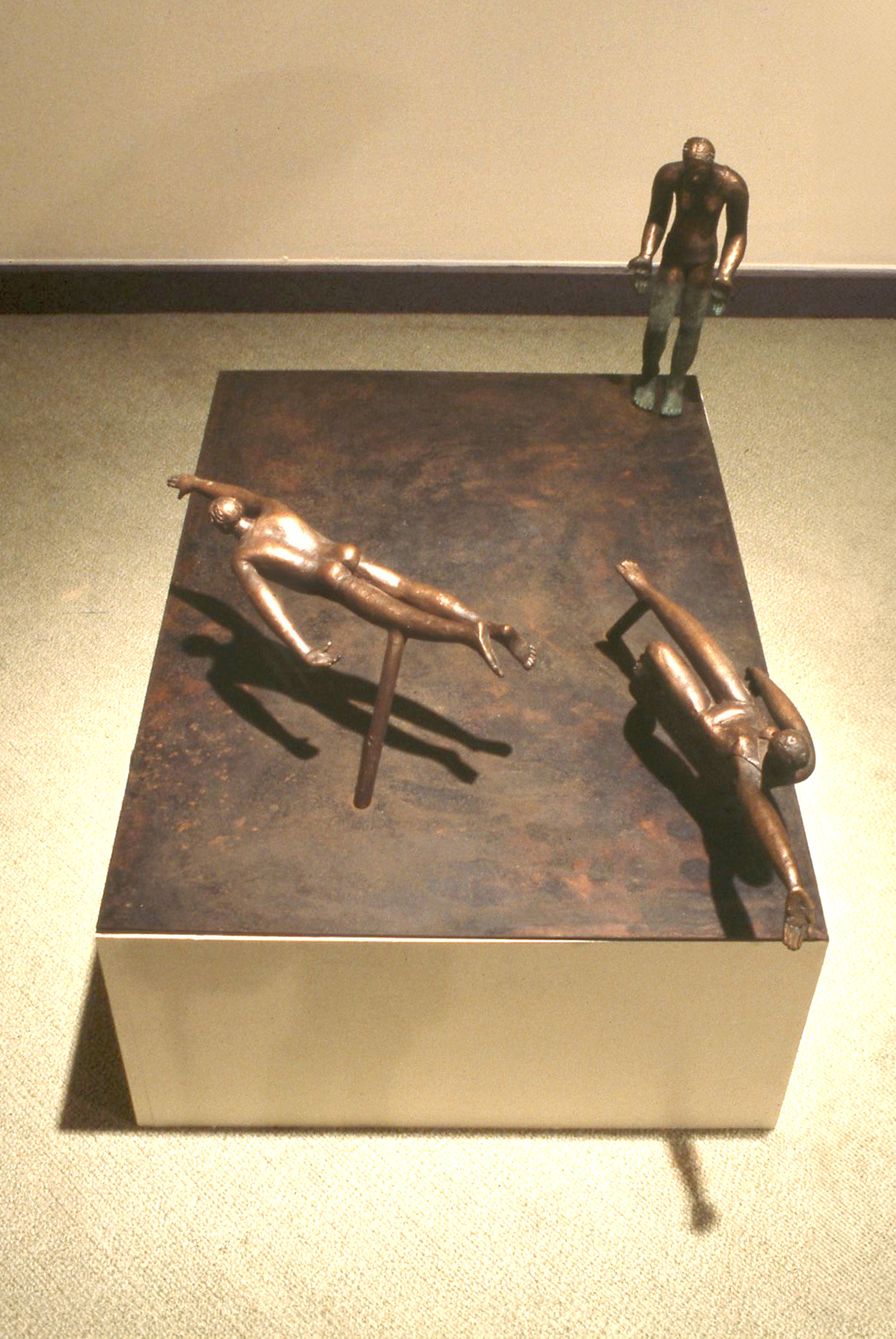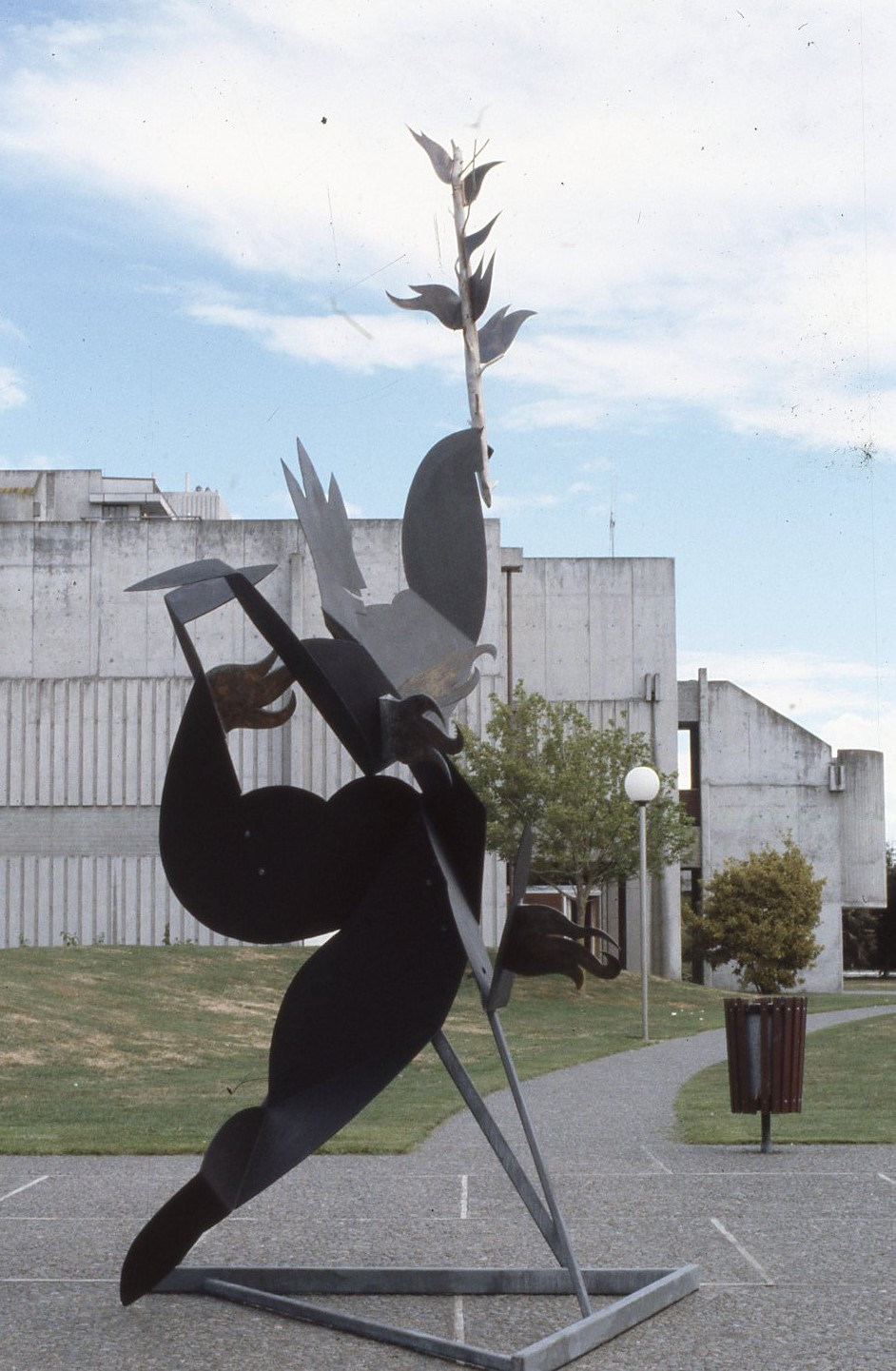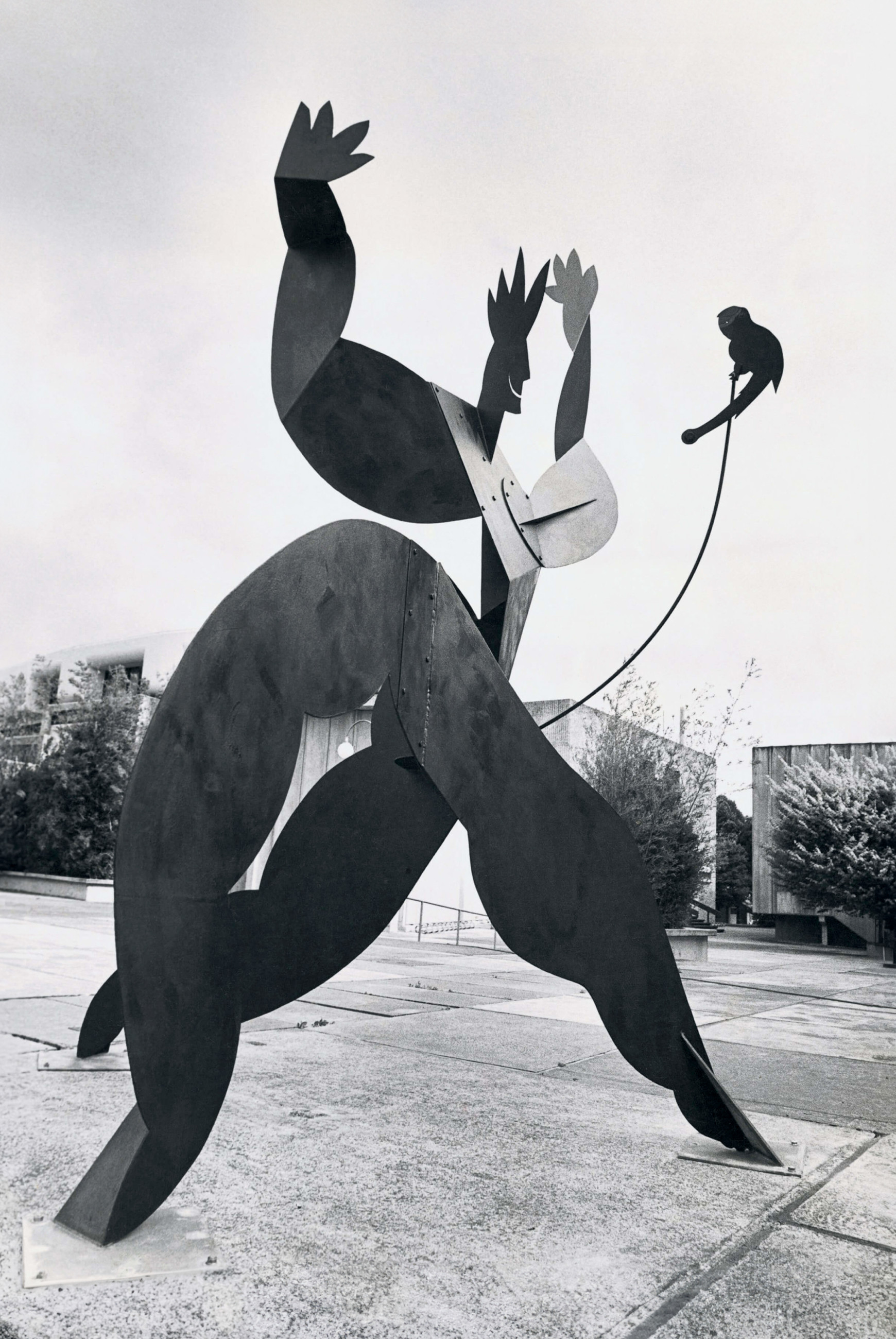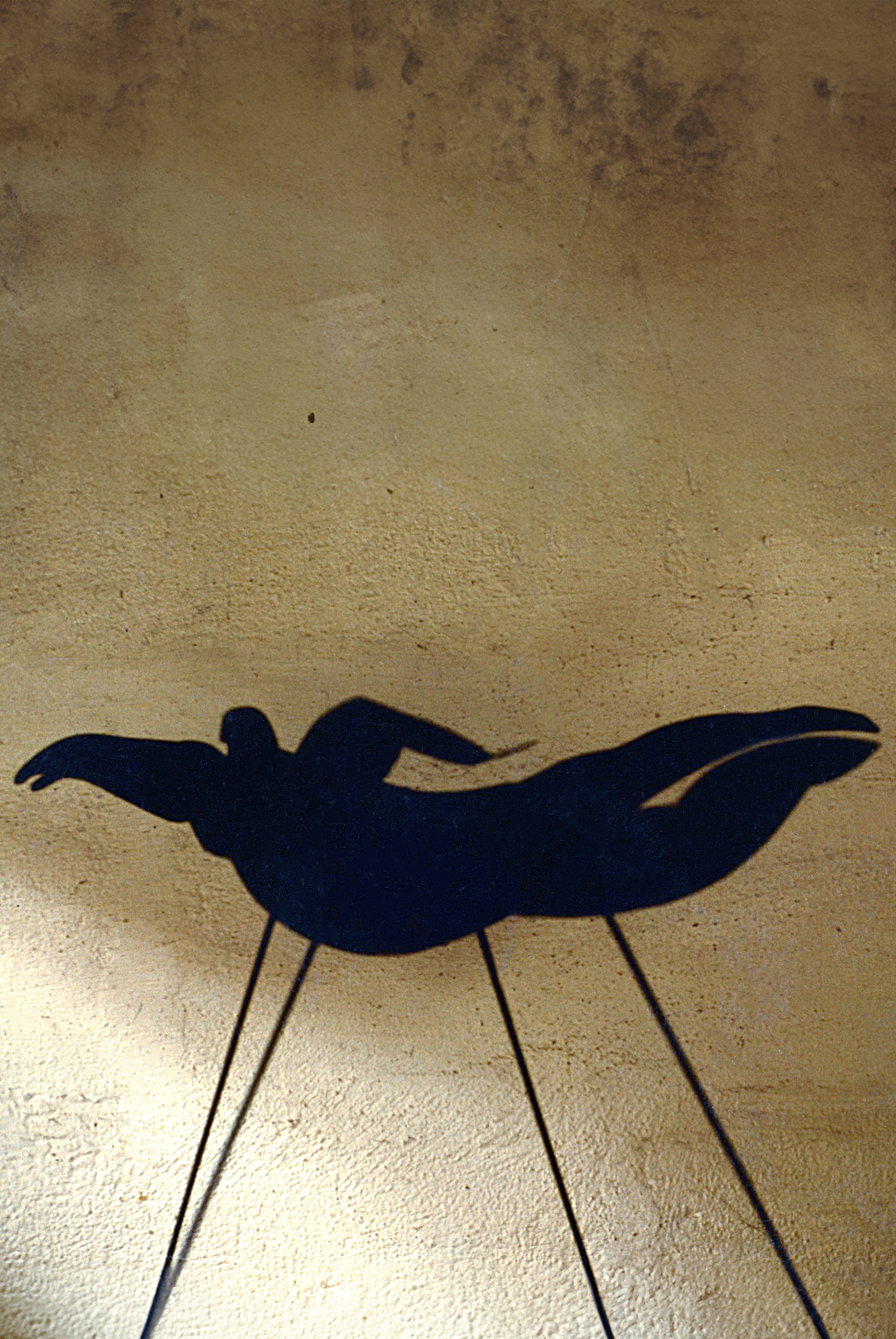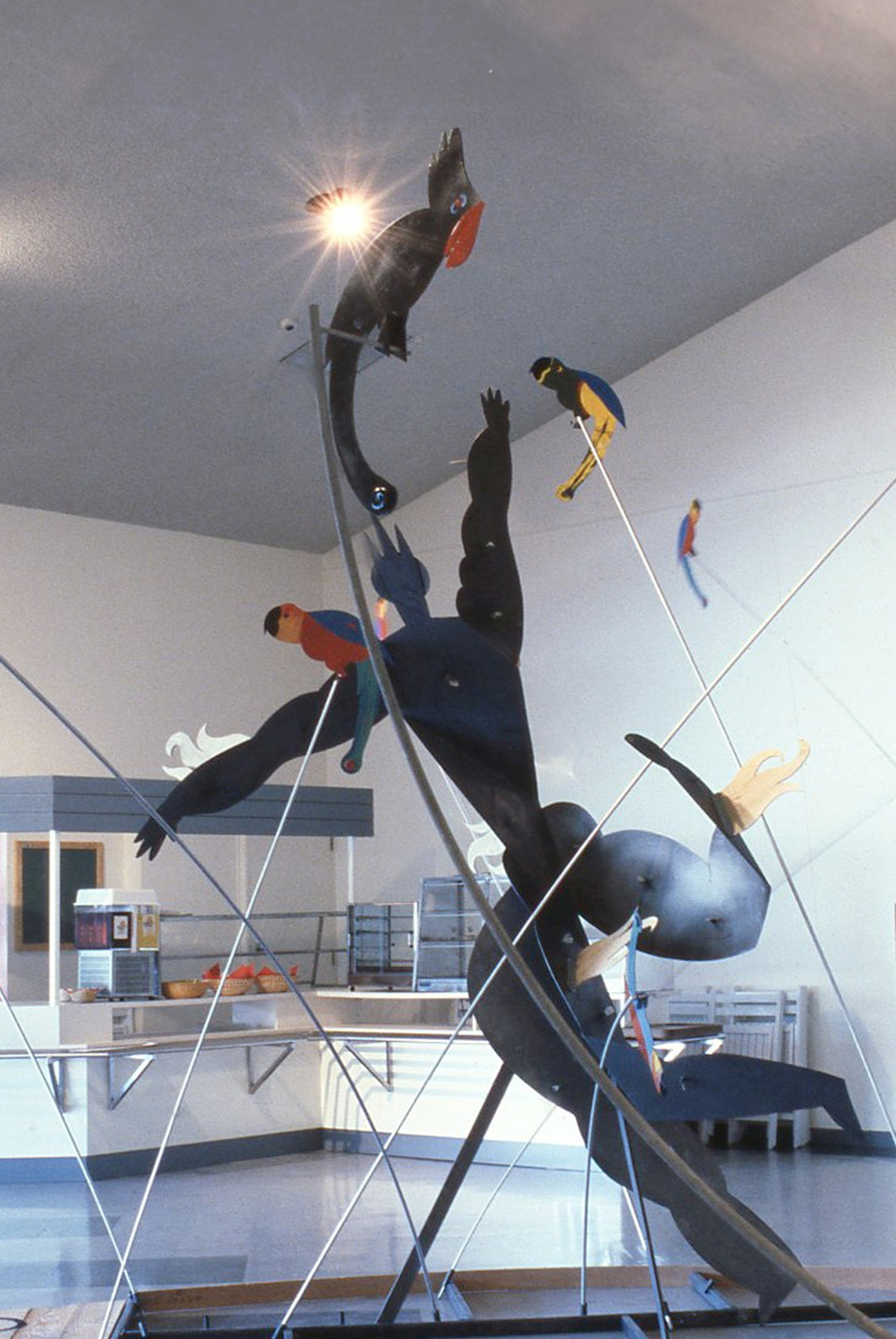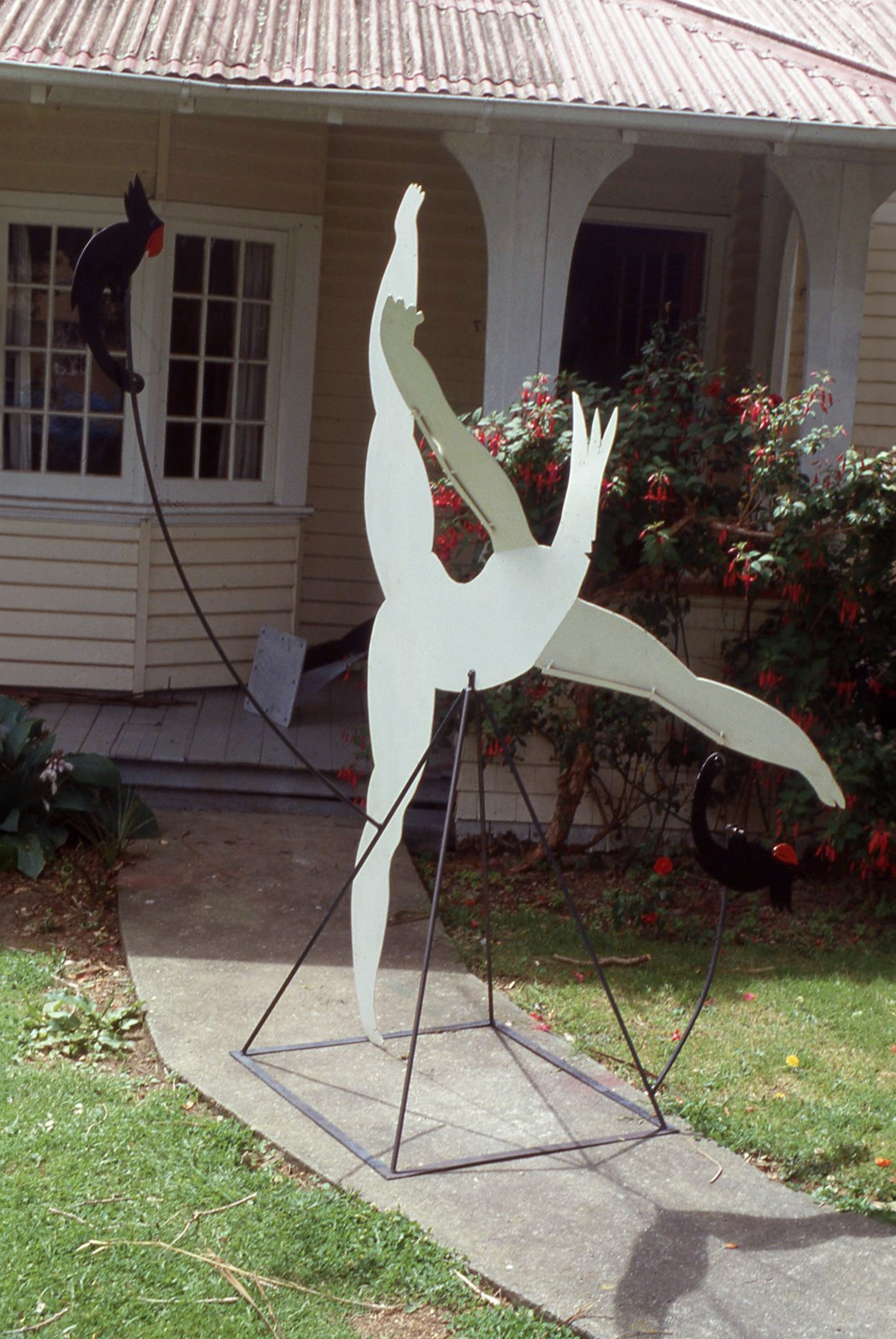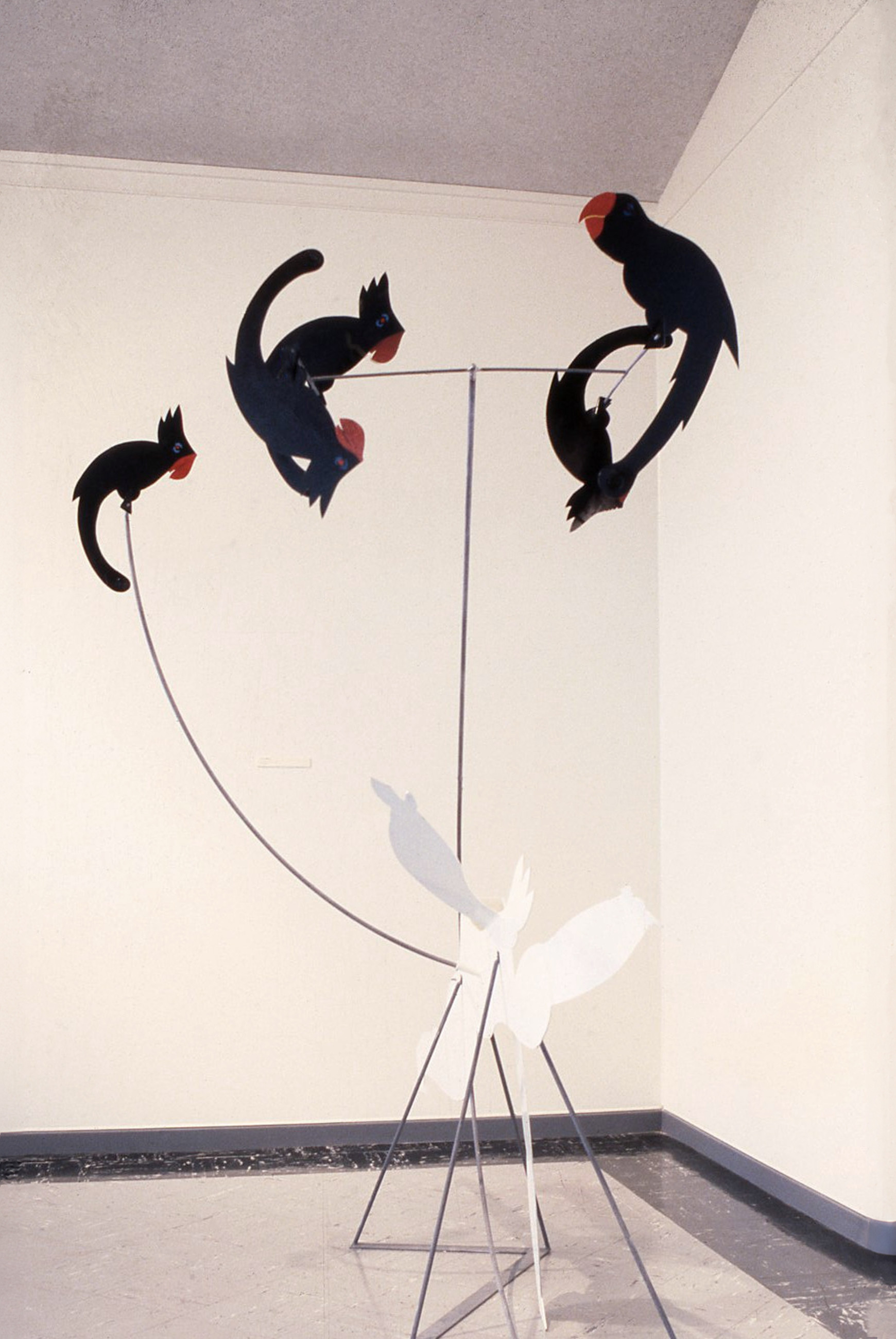February 6 - March 20, 1988 From Fire and Water
February 6 - March 20, 1988 From Fire and WaterSolo, The Dowse Art Museum, Lower Hutt
Text
‘The Foldings’ comprise work from both the Dowse exhibition From Fire and Water in 1988 and the Manawatu Art Gallery exhibition Sculpture for Cities in 1989.
‘The Foldings’ were a series of artworks made over a period of two to three years in the late 1980s. The first were made from galvanised sheet steel, cut and bent with pieces bolted together, almost like giant metal origami. Paul started to produce them substantially during a residency he was awarded at the Dowse in the summer of 1987/88. As with most of Paul’s bodies of artworks, there are no exact start and stop dates, as his work was often cyclical. The Dowse residency was taken up optimistically. Paul considered it a pivotal point in developing his career, with the hope that creating sculpture would eventually become a full-time occupation without the necessity of teaching to supplement the family income.
The Dowse residency consisted of accommodation in a house across the road from the gallery, where Paul was able to stay and work. It was a domestic house, which was somewhat inadequate for a sculptor’s needs, though Paul was eager to make the most of it. There was an understanding that the resident artist would be available for school visits and talks, and would have some flexibility to borrow tools from the gallery. Palmerston North College, where he was working at the time, gave Paul leave to take up the residency, with some of the four-month stint spanning the Christmas holidays. This residency became pivotal in Paul’s move to making large works suitable for outdoor contexts, a step away from domestic scale gallery works. These works were made to exist with the world around them, competing with trees, telephone poles, buildings; they were sculptures that would be immersed in real life.
The residency concluded with an exhibition at the Dowse. Seven large pieces of Paul’s work were gathered together and presented in a show titled From Fire and Water. Paul stated that the works “explored the calm and fury of the human spirit.” The sculptures were big, and the poles with parrots pushed them out exuberantly. Two of the Foldings were enormous – one was situated in the foyer (for all its vigour, titled Untitled 2) and another on the concrete paved area outside the gallery entrance. This piece, which greeted visitors to the gallery, was titled Fury in the Garden. It travelled to his next show, Sculpture for Cities at the Manawatu Art Gallery the following year, where it was also placed outside. There it was adorned with newly added cut out flames bolted onto the body.
The predecessors to these works were Paul’s Parrot Constructions, so the Foldings were visually an obvious progression. Some of these earlier works had abbreviated silhouettes of swimmers; minor players in the artworks against the poles and swinging parrots. At the Dowse, the parrots were played down and their numbers reduced. In many, just one straggler remained. The figures now became the central element – wrought from sheet metal, cut, bent, bolted and painted. They were of two types. There were stylised dancing figures with maniacal movements, almost out of control. The other type were swimmers, as if in yin/yang contrast. In the case of Untitled 1 and White Flight, the swimmers were carefully balanced, tipping forward as though in a gentle dive. Whereas in Deepwater, they were pushing forward in a freeform swim (the parrots were finally discarded; cut out steel fish followed the swimmer in their place).
The Dowse didn’t feature many models or small works. The intent was to be bold, and to showcase the giant works at full scale. To work out the cutting and bending, Paul made working models from paper and cardboard. These were discarded. A small copper sheet model for the big, commissioned work was made to last. It had fine rods soldered to hold the figures up, with a careful delicate feel to its construction. Even this work didn’t fit in the exhibition space. The large Swimmers in Space, each figure stretching over four metres in length was installed during the residency on the back outdoor wall of the gallery. It was shifted to a nearby green site when the gallery was redeveloped.
The residency wasn’t the greatest of successes for Paul. He never agreed to do another one there or elsewhere, even though he was asked several times over the years. It left a lasting impression that he did not want to repeat – of being cast adrift. In the process he lost a workshop, even if it was only a very rudimentary set up in the garage - and the support of the subcontractors who he worked with in getting the steel cut and folded. More significantly, he was away from his family. Not wanting to disturb the children’s schooling, the family had temporarily split, with some weekend travels back and forth. Fran was pregnant over the summer the residency took place. She went into labour at the gallery’s big opening event, and the Dibbles sped home to Palmerston North for the birth. The residency might have been considered a career move, but it wasn’t a method that worked for Paul.
